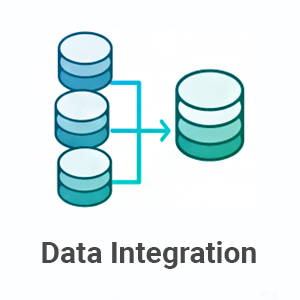


Click2Cloud-Data has become an important aspect of any enterprise. But to have a combined data, residing in different sources and providing users with a unified view of it, is somewhat painful for enterprises. Say, for example, a production company wants to make a product for one of its clients. It will start its analysis, research, data gathering process from multiple p:ints which might be time-consuming and costing. In such a situation, Data Integration helps to gather different data points in one single synchronized repository. This helps in saving time and cost.
Data integration is nothing but the process of combining data from different sources into a single synchronized repository. Data integration supports both online, and offline data collection processes are from different networks, locations, statistical data, data sources, etc. A data warehouse is the best example of data integration operation. A data warehouse is useful to gather the numerous amounts of data in a simple way.
Below mentioned diagram of data integration clearly specifies that data comes from different sources and data integration does a collection of it and provides in a unified view.
Fig: Process of Data Integration
There is some typical process in data integration, that includes client data sources, a server, and a master server. A server collects the data send by the client and passes on to the master server. A master server fetches all the external and internal data sources and provides a server with a synchronized single repository data. This data then server collects from a master server and sent back to a client node.
Data Integration is an advanced version that offers its customers with data transmission, data conversion, and synchronization of multiple data into a single repository. It gives a variety of features like scalability, fast data transmission, mass synchronization, gathers multiple data from different sources.
Data Integration is useful in saving time. When a consumer demands data, data integration helps to provide synchronized data quickly.
Data integration helps in eliminating errors from data sets that are used for business intelligence and decision making.
It allows multiple integrations of data from different sources like a data warehouse, systems, applications, databases, etc.
Sales, IT, government sectors, educational sector, medical field, data integration is rapidly using by different systems which lead to an increase in its adoption.
With Data Integration, organizations able to manage their customer and partner relationships. This provides the synchronized data in a short time period.
Data Integration also covers some areas that include:
Data collection from multiple data points is very painful. Data Integration helps in gathering and combining multiple data from various sources in a synchronized single repository. Data transmission, data conversion, and synchronization can be achieved with the help of the Data Integration platform. Data Integration helps in providing accurate, analytic, scalable, and highly reliable data from multiple sources. This helps users with consistent access and delivery of data across the spectrum of subjects and structure types, and to meet the information needs of all applications and business processes.